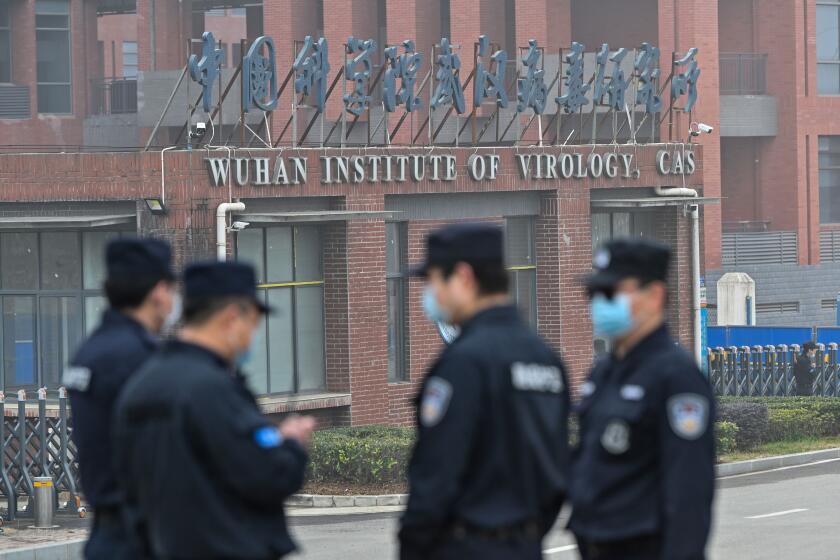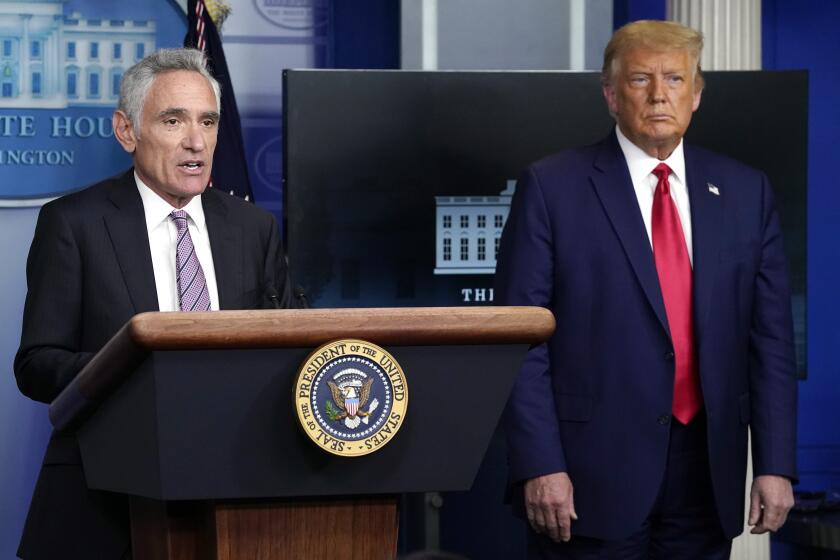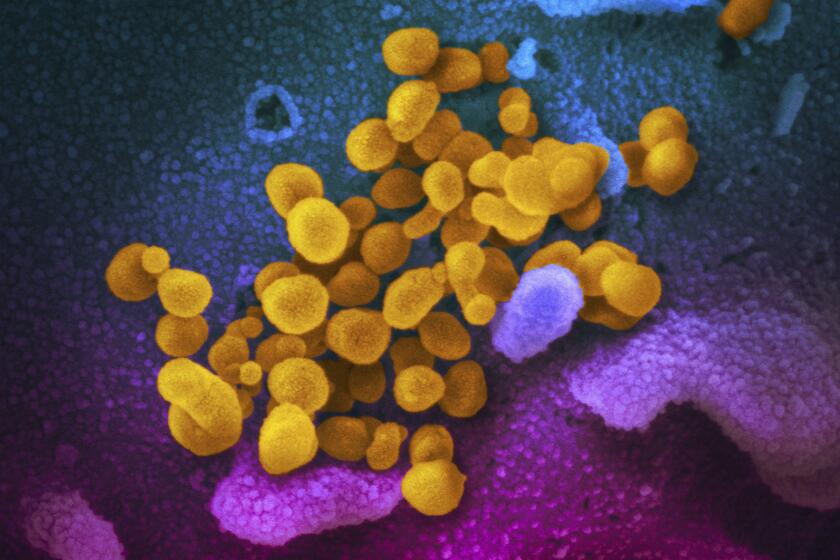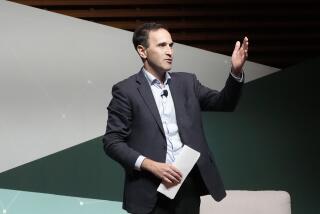Column: House Republicans give a crash course in how to concoct a conspiracy theory about COVID’s origin
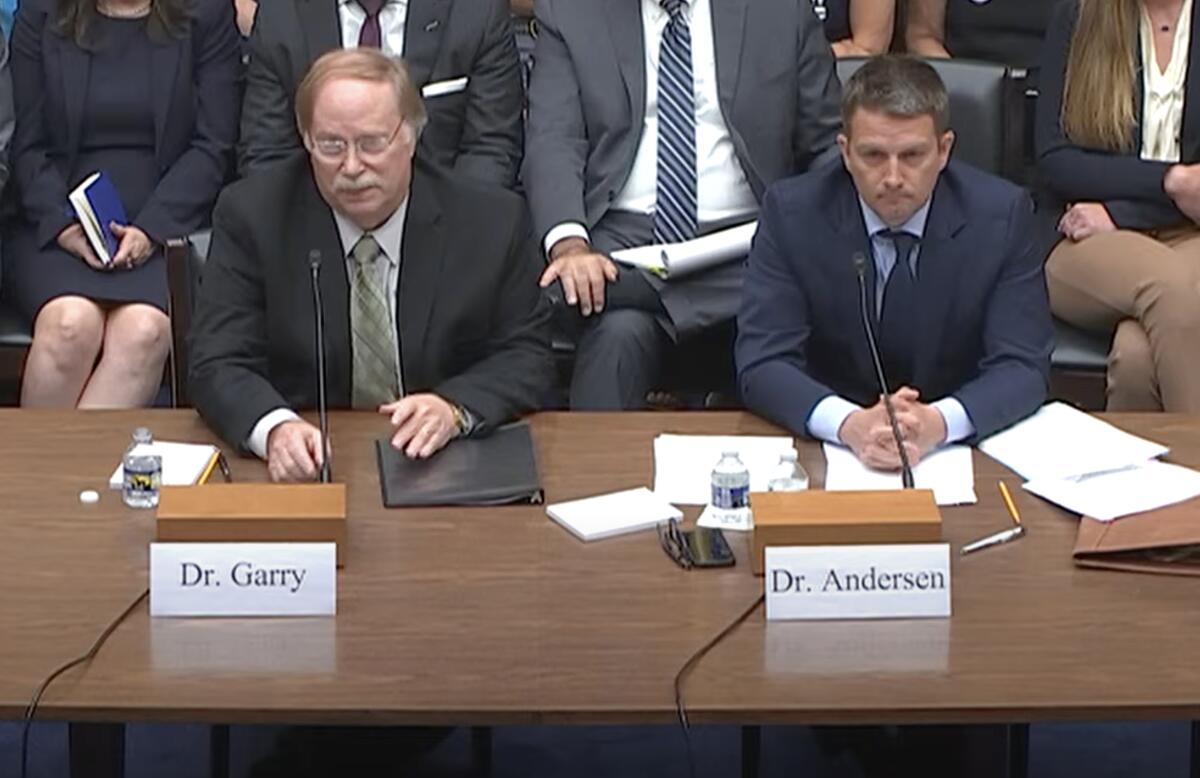
- Share via
Opening Tuesday’s House subcommittee hearing on the origin of the COVID virus, the panel’s chairman, Rep. Brad Wenstrup (R-Ohio), promised an impartial inquiry.
“This is not an attack on science,” he said. “And it’s not an attack on an individual.”
He and his GOP colleagues proceeded over nearly three hours to accuse Dr. Anthony Fauci, the former director of the National Institute of Allergy and Infectious Diseases — one of the most respected such scientists in the world — of having masterminded the creation of the virus, with the connivance of Dr. Francis Collins, then the director of the National Institutes of Health.
Misinformation, disinformation and conspiracy theories...have resulted in significant harassment and threats....Online there are so-called kill lists and I have found myself on those lists.
— Virological expert Kristian G. Andersen
The Republicans’ main “evidence,” such as it is, involves a seminal paper in the scientific study of the virus.
Published as a letter in the journal Nature Medicine on March 17, 2020, under the title “The Proximal Origin of SARS-CoV-2,” the paper weighed the two major theories of COVID’s origin: that it reached the human population from infected wildlife (known as zoonosis) or that it leaked from a government lab in Wuhan, China, the teeming metropolis where the first COVID outbreak occurred in late 2019.
Get the latest from Michael Hiltzik
Commentary on economics and more from a Pulitzer Prize winner.
You may occasionally receive promotional content from the Los Angeles Times.
The paper’s authors noted that all the features of SARS-CoV-2, the virus that causes COVID, are observable in nature, coinciding with the zoonosis hypothesis. They added, “we do not believe that any type of laboratory-based scenario is plausible.”
For years, Republicans have asserted without a scintilla of evidence that Fauci and Collins manipulated the scientific consensus away from the lab-leak hypothesis.
Why have they seized on this theory? Its provenance may offer a clue: It flowered during the Trump administration among political appointees in the State Department, who saw it as a cudgel with which to beat the Chinese government, which they viewed as an economic threat to the U.S. It was also useful to undermine the authority of Fauci, whose skepticism about Trump’s COVID policies was manifest.
A long-awaited government intelligence report suggests that COVID didn’t come from a Chinese lab, but don’t expect conspiracy-mongers to be satisfied.
Soon enough, it became Republican orthodoxy.
Lab leak proponents in government and Congress have smeared and vilified Fauci and Collins, among other scientists, in the service of purely partisan claims, ignoring the utter absence of any scientific evidence for a lab leak and the mounting evidence that it first reached humans through interactions with susceptible animals being sold illegally at a wildlife market in Wuhan.
The foils for this phase of the GOP effort to construct an evidence-free narrative of COVID’s origin were two of the five authors of the “Proximal Origin” paper, Robert F. Garry of Tulane and Kristian G. Andersen of Scripps Research in La Jolla.
Garry and Andersen sat patiently at the witness table in the committee room as the Republican members used cherry-picked quotes from their emails, misrepresented their research findings and ignored their painstaking explanations of how science is done in the real world. They listened stoically to committee members — some of whom have medical degrees but none any evident expertise in scientific research — harangue them about supposed flaws in their scientific methods.
“We do know something for certain,” Westrup said: “that the drafting, coordination and publication of ‘Proximal Origin’ and downplaying the lab leak was antithetical to science.”
One low note among many others during the hearing came from Rep. Ronny Jackson (R-Texas), who charged that “Dr. Anthony Fauci and Francis Collins realized that they had been implicated in the creation of production or the creation of this virus and they were doing everything they could including both of you to come on board as tools or vehicles to undermine that theory.”
Truth to tell, however, the committee majority’s purpose was no secret from the start. The hearing was titled, after all, “Investigating the Proximal Origin of a Cover Up.”
It may be useful to examine the path the subcommittee’s GOP majority traveled to come to its assertions that the Proximal Origin paper was a sham.
They were some of the most prominent academics in the country. They pushed a devastatingly wrong COVID policy, but they’ve never admitted their error.
As laid out in written testimony submitted to the subcommittee by Garry and Andersen, it started in January 2020, when almost nothing was known about the virus and not much about its genomic family.
The first examinations of its structure revealed several features unfamiliar to virologists. At first glance, they looked like nothing occurring in nature. Many thought this pointed to some sort of laboratory engineering.
When Andersen brought this concern to Fauci during a call on Jan. 31, Fauci urged him to write a scientific paper about the issue, and suggested that if confirmed, the matter should be referred to the FBI and the British intelligence service MI5.
Jeremy Farrar, an infectious disease expert who is currently the chief scientist of the World Health Organization, convened a conference call on Feb. 1 among nine scientists, including Andersen and Garry. Fauci and Collins joined the call, but by all accounts merely listened in without contributing any opinions.
New data came to the scientific community in a torrent over the next few days and weeks. The unfamiliar features turned out to be more common in nature than many virologists had known, and the process by which they might become incorporated in SARS-CoV-2 progressively better understood.
By the end of February, when the authors of the Proximal Origin paper submitted an initial draft to Nature Medicine, they still did not have enough data to rule out either major theory but had become more certain that a laboratory role was implausible.
The subcommittee Republicans profess to be thunderstruck that a theory about COVID’s origin could be posed and discarded in the space of a few days, but Andersen and Garry tried to explain that they’re wrong.
The scientists started with no data, and incorporated new information into their viewpoints as it arrived. In any event, Andersen testified, the period between the conference and the publication of the paper wasn’t three days, as the Republicans kept insisting, but 45 days. Neither Fauci nor Collins played any role in guiding the authors’ conclusions, the witnesses said.
The published paper, moreover, made clear that the state of SARS-CoV-2 research was in its infancy. “More scientific data could swing the balance of evidence to favor one hypothesis over another,” the authors wrote.
Trump blocked a study of bat viruses for political reasons. His meddling has finally been reversed, but the world lost years of potentially life-saving research.
But its general conclusion that a lab leak is implausible and the virus probably emerged by natural spillover from animals “has only been further supported by additional evidence and studies,” Andersen told the subcommittee. He and Garry said that if evidence emerged supporting a lab leak, they would examine it objectively and be guided by their findings. As of this moment, there is none.
Under prompting by subcommittee Democrats, the witnesses pointed to the long-term consequences of the Republican efforts to foment mistrust of science by mainstreaming conspiracies.
“Misinformation, disinformation and conspiracy theories around the paper have resulted in significant harassment and threats,” Andersen said. “Including everything from typical targets on social media to emails, to telephone calls to my office ... to death threats.... Online there are so-called kill lists and I have found myself on those lists together with my co-authors.”
The thrust of the subcommittee’s claims, he said, “is that the virus was created and that American scientists played a role in that and have been covering that up.... All of which, as the record clearly shows, is false.... The focus has been that there’s a need to blame someone.”
What has been going on here has been nothing less than a partisan witch hunt. Westrup made clear that the Republican narrative was predetermined: “We’re examining any conflicts of interest, biases or suppression of scientific discourse regarding the origins of COVID-19,” he said. The record shows, however, that what occurred was the scientific method in action.
If the subcommittee members are truly devoted to protect Americans from a future pandemic, they couldn’t find a worse way to reach that goal. “If I was a future scientist, looking at the attacks directed at us, for example, maybe I wouldn’t go into infectious disease research.... It’s incredibly damaging,” Anderson said.
More to Read
Get the latest from Michael Hiltzik
Commentary on economics and more from a Pulitzer Prize winner.
You may occasionally receive promotional content from the Los Angeles Times.

